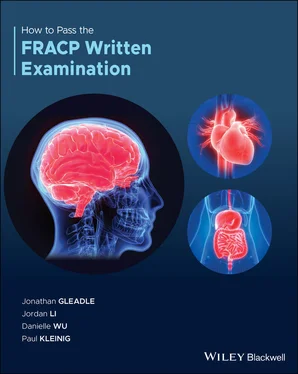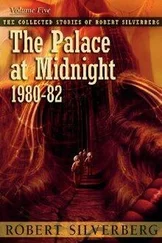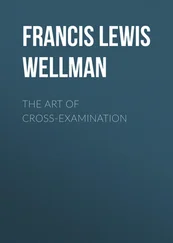Development of pathological Q waves
Imaging evidence of new loss of viable myocardium or new regional wall motion abnormality in a pattern consistent with an ischaemic aetiology.
The diagnosis of type 2 MI is associated with a poor prognosis: less than 40% of patients will live 5 years past their diagnosis. In contrast, 65% of patients with type 1 MI will survive for 5 years. This is because type 2 MI typically occurs among older patients with multiple comorbidities and is identified in the context of hemodynamic instability, including shock, tachycardia, respiratory failure, gastrointestinal bleeding, decompensated heart failure, or recent surgery. Moreover, in contrast to type 1 MI that has a clear set of guideline‐based recommendations for treatment, management of type 2 MI remains uncertain.
Although the benefits of antiplatelet agents, β‐blockers, and statins have been demonstrated among patients with type 1 MI, the utility of these medications among patients with type 2 MI remains uncertain. Currently, patients with type 2 MI are less likely to be discharged while taking these cardioprotective agents.
Reported prevalence of CAD among patients with type 2 MI varies with study design, ranging from 36% to 78%. About 30% of patients with type 2 MI experiencing major adverse cardiovascular events at 5 years, it is plausible that coronary revascularisation could be beneficial in those with obstructive CAD.

Thygesen K, Alpert J, Jaffe A, et al. Fourth universal definition of myocardial infarction (2018). European Heart Journal. 2018;40(3):237–269.
https://academic.oup.com/eurheartj/article/40/3/237/5079081
36. Answer: C
This patient's ECG, while in sinus rhythm 1‐year ago shows classic pattern of pre‐excitation – Wolff‐Parkinson‐White (WPW) syndrome. The ECG features a short PR interval; a slurred, thickened initial upstroke of the QRS complex, which is termed a delta wave; and a slight widening of the QRS deflexion with increased ventricular activation time. He presents with symptomatic pre‐excited atrial fibrillation (AF) with a rapid ventricular response requiring urgent treatment.
AF is a medical emergency when rapid antegrade conduction over an accessory pathway occurs in WPW syndrome. This is because the normal rate‐limiting effects of the atrioventricular (AV) node are bypassed, and the resultant excessive ventricular rates may lead to ventricular fibrillation and sudden death. The incidence of paroxysmal AF is between 10% and 38% in patients with WPW syndrome.
Urgent treatment for patients with WPW syndrome presenting with a tachydysrhythmia who are haemodynamically unstable, regardless of the QRS duration or regularity is direct current cardioversion. The electrical shock depolarises all excitable myocardium, lengthens refractoriness, interrupts re‐entrant circuits, discharges foci, and establishes electrical homogeneity that terminates re‐entry. Embolic episodes occur in 1–3% of the patients converted from AF to sinus rhythm if the episodes are longer than 48 hours. In those patients, anticoagulation must be addressed prior to cardioversion, with consideration of a transesophageal echocardiogram to exclude left atrial thrombus.
The acute treatment of pre‐excited AF WPW syndrome in a haemodynamically stable patient requires a rapid acting drug that can be given intravenously and can lengthen antegrade refractoriness and slow conduction in both the AV node/His‐Purkinje system and the accessory pathway. The class IC antiarrhythmic drugs such as flecainide which prolong the refractory period of the accessory connection are effective in this setting. Amiodarone, a class III antiarrhythmic drug, may also be used. AV node blockers (β‐blockers, non‐dihydropyridine calcium channel blockers and dıgoxin) are contraindicated for pre‐excited AF because inhibition of AV node conduction can increase pre‐excitation and lead to an increase in the ventricular rate and ventricular fibrillation. Intravenous adenosine is also contraindicated because it causes an effect similar to verapamil and can precipitate ventricular fibrillation. Catheter ablation is the recommended treatment for the long‐term therapy of pre‐excited AF.

Svendsen J, Dagres N, Dobreanu D, et al. Current strategy for treatment of patients with Wolff‐Parkinson‐White syndrome and asymptomatic preexcitation in Europe: European Heart Rhythm Association survey. Europace. 2013;15(5):750–753. https://academic.oup.com/europace/article/15/5/750/675642
37. Answer: D
Minoxidil is metabolised to an active sulfate metabolite, which antagonises the effect of ATP on K ATPchannels. The cell is thus hyperpolarised, which deactivates voltage‐dependant calcium channels. The net effect of this action is smooth muscle relaxation. Undesirable side effects of K ATPchannel blockade include hirsutism and marked salt and water retention. Therefore, minoxidil is usually co‐administered with a loop diuretic.
38. Answer: C
Sacubitril (through its active metabolite sacubitilat) inhibits neprolysin, which in turn increases circulating levels of natriuretic peptides, thus decreasing extracellular volume through induction of renal sodium excretion. In combination with valsartan, sacubitril shows efficacy in treating symptomatic patients with heart failure with reduced ejection fraction. Neprolysin is involved in the degradation of other peptides including bradykinin which elicited adverse effects of renal failure, angioedema, and hyperkalaemia in the randomised controlled trial.
39. Answer: B
Moxonidine antagonises the central control of sympathetically mediated vasoconstriction by stimulating the imidazoline (I 1) receptor present in the brainstem, which in turn decreases central catecholamine synthesis. Moxonidine and clonidine act at α 2receptors as well, however moxonidine has much higher affinity for the I 1receptor.
40. Answer: E
Captopril is the archetypal ACE inhibitor that decreases the production of angiotensin II by competitively adhering to the binding site for angiotensin I on ACE. ACE is a membrane bound enzyme predominantly present on vascular endothelium which is most extensively, but not exclusively, expressed in the lung. Angiotensin I undergoes conformational change when interacting with ACE to produce angiotensin II. Angiotensin II has multiple effects which increase blood pressure including proximal tubular absorption of sodium, increased secretion of aldosterone, increased noradrenaline release, and growth of cardiac and vascular cells. ACE is also involved in the degradation of bradykinin, consequently angioedema is a well‐known side effect.
41. Answer: G
Some drugs induce relaxation of vascular smooth muscle by increasing cellular concentration of either cyclic adenosine monophosphate (cAMP) or cyclic guanine monophosphate (cGMP). Nitrates are reduced to nitric oxide by a variety of mechanisms. Nitric oxide activates guanylyl cyclase, which in turn increases cGMP production from guanosine triphosphate, which stimulates dephosphorylation of myosin, leading to vasodilation.
42. Answer: A
Beta receptor blockers decrease blood pressure by two main mechanisms. The first is by decreasing cardiac output by blockade of cardiac β 1‐receptors, the second is by blocking renal β 1‐receptors, resulting in decreased renin secretion.
Читать дальше














